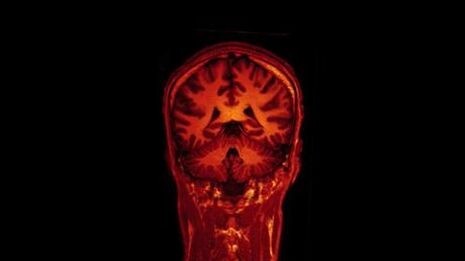New scanners will give Cambridge unprecedented access to the brain
The newly-refurbished Wolfson Brain Imaging Centre houses three of the world’s most powerful brain scanners

New brain scanners are going to allow the University of Cambridge to track the inner workings of the brain in unprecedented detail, marking a big step forward in helping to prevent cancer, dementia, Parkinson’s and Alzheimer’s.
The newly refurbished Wolfson Brain Imaging Centre contains three of the world’s most powerful magnetic resonance imaging (MRI) and positron emission tomography (PET) brain scanners that are to be opened this week. Only a small amount of these scanners exist outside Cambridge and only Cambridge is in possession of all three.
Professor Ed Bullmore, head of neuroscience at the University, is very excited about the new possibilities that these machines will bring: “It is a remarkable set of machines. We will be able to address clinical issues such as the detailed progression of Parkinson’s disease. At the same time, we will be able to address basic issues about the mind. How does the brain develop? How does the adult brain perform its functions?”
The first scanner, a Siemens 7T Terra MRI scanner will enable researchers to see details in the brain as small as a grain of sand. This device is much more powerful than any previous devices: the strength of the magnetic fields that current devices produce is approximately 3T (tesla) meaning they can see structures 2-3mm in size. In contrast, the new Cambridge scanner has a 7T magnetic field with a resolution of approximately 0.5mm.
This extra power will allow breakthroughs in the analysis of the structures and inner workings of the brain. Bullmore explains, “That is a very important difference. The outer layer of the brain, the cortex, is about 3-4mm thick. That is the grey matter that provides us with our thoughts. Current scanners show it as a single strip. The new 7T device will allow us to differentiate the cortex so we will be able to see its different structures and allow us to understand how they interact. We are going to learn how the brain works as a network.”
This precision will also help to combat Alzheimer’s and Parkinson’s as explained by Dr James Rowe, who will lead research using this device: “Often, the early stages of diseases of the brain – such as Alzheimer’s and Parkinson’s – occur in very small structures. The early seeds of dementia for example, which are often sown in middle age, have been hidden to earlier types of MRI – until now.”
The second scanner, a GE Healthcare PET/MR scanner will allow scientists to understand how cancers grow, spread and respond to treatment. It will also enable them to study how dementia progresses by mapping the chemical changes that go with the structural alterations to the brain. “This should enable researchers to diagnose dementia before any symptoms have arisen and to understand which treatments may best halt or slow the disease,” says Professor Fiona Gilbert, who will lead the work on the PET/MR scanner.
The third device is a hyperpolariser, which will help researchers to study real-time metabolic changes in cancers and tissues, and to determine if cancer therapy is working or not. Patients with cancer respond differently to different treatments. “However, if you sequence the DNA in the tumour, you can select drugs that might work for that individual,” explains Professor Kevin Brindle. “Using hyperpolarisation and MRI, we then hope to be able to tell whether that drug is working – within a few hours of starting treatment. If it’s working, you continue, if not, you change the treatment.”
The refurbishment of the Brain Imaging Centre was funded by the Medical Research Council, the Wellcome Trust and Cancer Research UK.
 News / Fitz students face ‘massive invasion of privacy’ over messy rooms23 April 2024
News / Fitz students face ‘massive invasion of privacy’ over messy rooms23 April 2024 News / Climate activists smash windows of Cambridge Energy Institute22 April 2024
News / Climate activists smash windows of Cambridge Energy Institute22 April 2024 News / Copycat don caught again19 April 2024
News / Copycat don caught again19 April 2024 News / Emmanuel College cuts ties with ‘race-realist’ fellow19 April 2024
News / Emmanuel College cuts ties with ‘race-realist’ fellow19 April 2024 Comment / Does Lucy Cavendish need a billionaire bailout?22 April 2024
Comment / Does Lucy Cavendish need a billionaire bailout?22 April 2024





